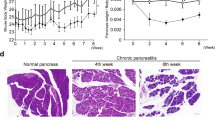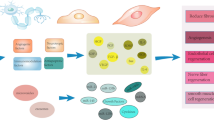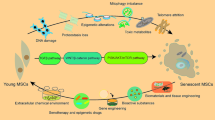Abstract
Objective and design
Post-traumatic urethral stricture is a clinical challenge for both patients and clinicians. Targeting glutamine metabolism to suppress excessive activation of urethral fibroblasts (UFBs) is assumed to be a potent and attractive strategy for preventing urethral scarring and stricture.
Material or subjects
In cellular experiments, we explored whether glutaminolysis meets the bioenergetic and biosynthetic demands of quiescent UFBs converted into myofibroblasts. At the same time, we examined the specific effects of M2-polarized macrophages on glutaminolysis and activation of UFBs, as well as the mechanism of intercellular signaling. In addition, findings were further verified in vivo in New Zealand rabbits.
Results
It revealed that glutamine deprivation or knockdown of glutaminase 1 (GLS1) significantly inhibited UFB activation, proliferation, biosynthesis, and energy metabolism; however, these effects were rescued by cell-permeable dimethyl α-ketoglutarate. Moreover, we found that exosomal miR-381 derived from M2-polarized macrophages could be ingested by UFBs and inhibited GLS1-dependent glutaminolysis, thereby preventing excessive activation of UFBs. Mechanistically, miR-381 directly targets the 3′UTR of Yes-associated protein (YAP) mRNA to reduce its stability at the transcriptional level, ultimately downregulating expression of YAP, and GLS1. In vivo experiments revealed that treatment with either verteporfin or exosomes derived from M2-polarized macrophages significantly reduced urethral stricture in New Zealand rabbits after urethral trauma.
Conclusion
Collectively, this study demonstrates that exosomal miR-381 from M2-polarized macrophages reduces myofibroblast formation of UFBs and urethral scarring and stricture by inhibiting YAP/GLS1-dependent glutaminolysis.






Similar content being viewed by others
Data availability
Not applicable.
Abbreviations
- UFBs:
-
Urethral fibroblasts
- GLS1:
-
Glutaminase 1
- YAP:
-
Yes-associated protein
- PTUS:
-
Post‐traumatic urethral stricture
- α‐KG:
-
α‐Ketoglutarate
- TGF-β1:
-
Transforming growth factor β1
- qRT-PCR:
-
Quantitative real-time polymerase chain reaction
References
Gelman J, Furr J. Urethral stricture disease: evaluation of the male urethra. J Endourol. 2020;34(S1):S2-s6.
Santucci RA, Joyce GF, Wise M. Male urethral stricture disease. J Urol. 2007;177(5):1667–74.
Tritschler S, Roosen A, Füllhase C, Stief CG, Rübben H. Urethral stricture: etiology, investigation and treatments. Deutsches Arzteblatt Int. 2013;110(13):220–6.
Akyüz M, Tokuç E, Özsoy E, Koca O, Kanberoğlu H, Öztürk M, et al. Characteristics of the urethroplasty and our approach-experience in patients with urethral stricture. Turkish J Urol. 2019;45(4):307–11.
Veeratterapillay R, Pickard RS. Long-term effect of urethral dilatation and internal urethrotomy for urethral strictures. Curr Opin Urol. 2012;22(6):467–73.
Hughes M, Blakely S, Nikolavsky D. Advancements in transurethral management of urethral stricture disease. Curr Opin Urol. 2021;31(5):504–10.
Kurtzman JT, Kosber R, Kerr P, Brandes SB. Evaluating tools for characterizing anterior urethral stricture disease: a comparison of the LSE system and the urethral stricture score. J Urol. 2022;208(5):1083–9.
Shaw NM, Venkatesan K. Endoscopic management of urethral stricture: review and practice algorithm for management of male urethral stricture disease. Curr Urol Rep. 2018;19(3):19.
Liang YC, Wu YP, Li XD, Chen SH, Ye XJ, Xue XY, et al. TNF-α-induced exosomal miR-146a mediates mesenchymal stem cell-dependent suppression of urethral stricture. J Cell Physiol. 2019;234(12):23243–55.
Sourial MW, Richard PO, Bettez M, Jundi M, Tu LM. Mitomycin-C and urethral dilatation: a safe, effective, and minimally invasive procedure for recurrent vesicourethral anastomotic stenoses. Urol Oncol. 2017;35(12):672.e15-e19.
Mazdak H, Tolou Ghamari Z, Khorrami A. Investigation of Triamcinolone instillation in the long-term rate of anterior urethral strictures’ recurrence. Curr Urol. 2020;14(4):206–10.
Virasoro R, DeLong JM, Mann RA, Estrella RE, Pichardo M, Lay RR, et al. A drug-coated balloon treatment for urethral stricture disease: Interim results from the ROBUST I study. Can Urol Association J. 2020;14(6):187–91.
Xu N, Chen SH, Qu GY, Li XD, Lin W, Xue XY, et al. Fasudil inhibits proliferation and collagen synthesis and induces apoptosis of human fibroblasts derived from urethral scar via the Rho/ROCK signaling pathway. Am J Transl Res. 2017;9(3):1317–25.
Chen YH, Dong RN, Hou J, Lin TT, Chen SH, Chen H, et al. Mesenchymal stem cell-derived exosomes induced by IL-1β attenuate urethral stricture through let-7c/PAK1/NF-κB-regulated macrophage M2 polarization. J Inflamm Res. 2021;14:3217–29.
Castiglione F, Dewulf K, Hakim L, Weyne E, Montorsi F, Russo A, et al. Adipose-derived stem cells counteract urethral stricture formation in rats. Eur Urol. 2016;70(6):1032–41.
Hofer MD, Cheng EY, Bury MI, Park E, Xu W, Hong SJ, et al. Analysis of primary urethral wound healing in the rat. Urology. 2014;84(1):246.e1-7.
Wilkinson HN, Hardman MJ. Wound healing: cellular mechanisms and pathological outcomes. Open Biol. 2020;10(9): 200223.
Guido C, Whitaker-Menezes D, Capparelli C, Balliet R, Lin Z, Pestell RG, et al. Metabolic reprogramming of cancer-associated fibroblasts by TGF-β drives tumor growth: connecting TGF-β signaling with “Warburg-like” cancer metabolism and L-lactate production. Cell Cycle (Georgetown, Tex). 2012;11(16):3019–35.
Gibb AA, Huynh AT, Gaspar RB, Ploesch TL, Lombardi AA, Lorkiewicz PK, et al. Glutamine uptake and catabolism is required for myofibroblast formation and persistence. J Mol Cell Cardiol. 2022;172:78–89.
Lu W, Pelicano H, Huang P. Cancer metabolism: is glutamine sweeter than glucose? Cancer Cell. 2010;18(3):199–200.
Hewitson TD, Smith ER. A metabolic reprogramming of glycolysis and glutamine metabolism is a requisite for renal fibrogenesis-why and how? Front Physiol. 2021;12: 645857.
Hamanaka RB, O’Leary EM, Witt LJ, Tian Y, Gökalp GA, Meliton AY, et al. Glutamine metabolism is required for collagen protein synthesis in lung fibroblasts. Am J Respir Cell Mol Biol. 2019;61(5):597–606.
Du K, Hyun J, Premont RT, Choi SS, Michelotti GA, Swiderska-Syn M, et al. Hedgehog-YAP signaling pathway regulates glutaminolysis to control activation of hepatic stellate cells. Gastroenterology. 2018;154(5):1465-79.e13.
Mescher AL. Macrophages and fibroblasts during inflammation and tissue repair in models of organ regeneration. Regeneration (Oxford, England). 2017;4(2):39–53.
Chen L, Wang J, Li S, Yu Z, Liu B, Song B, et al. The clinical dynamic changes of macrophage phenotype and function in different stages of human wound healing and hypertrophic scar formation. Int Wound J. 2019;16(2):360–9.
Witherel CE, Abebayehu D, Barker TH, Spiller KL. Macrophage and fibroblast interactions in biomaterial-mediated fibrosis. Adv Healthcare Mater. 2019;8(4): e1801451.
Bertero T, Oldham WM, Cottrill KA, Pisano S, Vanderpool RR, Yu Q, et al. Vascular stiffness mechanoactivates YAP/TAZ-dependent glutaminolysis to drive pulmonary hypertension. J Clin Investig. 2016;126(9):3313–35.
Yao HJ, Wei ZW, Wan X, Tao YC, Zheng DC, Wang Z, et al. Three new experimental models of anterior urethral stricture in rabbits. Transl Androl Urol. 2022;11(6):761–72.
Cox AG, Hwang KL, Brown KK, Evason K, Beltz S, Tsomides A, et al. Yap reprograms glutamine metabolism to increase nucleotide biosynthesis and enable liver growth. Nat Cell Biol. 2016;18(8):886–96.
Zhang D, Zhao L, Luo M, Lei J, Shao S. Yap-Myc signaling induces pancreatic stellate cell activation through regulating glutaminolysis. Exp Cell Res. 2022;411(1): 113000.
Bott AJ, Peng IC, Fan Y, Faubert B, Zhao L, Li J, et al. Oncogenic myc induces expression of glutamine synthetase through promoter demethylation. Cell Metab. 2015;22(6):1068–77.
Wu B, Feng J, Guo J, Wang J, Xiu G, Xu J, et al. ADSCs-derived exosomes ameliorate hepatic fibrosis by suppressing stellate cell activation and remodeling hepatocellular glutamine synthetase-mediated glutamine and ammonia homeostasis. Stem Cell Res Ther. 2022;13(1):494.
Wang S, Liang Y, Dai C. Metabolic regulation of fibroblast activation and proliferation during organ fibrosis. Kidney Dis (Basel, Switzerland). 2022;8(2):115–25.
Bernard K, Logsdon NJ, Benavides GA, Sanders Y, Zhang J, Darley-Usmar VM, et al. Glutaminolysis is required for transforming growth factor-β1-induced myofibroblast differentiation and activation. J Biol Chem. 2018;293(4):1218–28.
Wang S, Yan Y, Xu WJ, Gong SG, Zhong XJ, An QY, et al. The role of glutamine and glutaminase in pulmonary hypertension. Front Cardiovasc Med. 2022;9: 838657.
Bertero T, Perk D, Chan SY. The molecular rationale for therapeutic targeting of glutamine metabolism in pulmonary hypertension. Expert Opin Ther Targets. 2019;23(6):511–24.
Lucas T, Waisman A, Ranjan R, Roes J, Krieg T, Müller W, et al. Differential roles of macrophages in diverse phases of skin repair. J Immunol (Baltimore, Md: 1950). 2010;184(7):3964–77.
NVLK A, Subramanian S, Ramakrishna S. Therapeutic applications of exosomes in various diseases: a review. Biomater Adv. 2022;134:112579.
Kilikevicius A, Meister G, Corey DR. Reexamining assumptions about miRNA-guided gene silencing. Nucleic Acids Res. 2022;50(2):617–34.
Rencelj A, Gvozdenovic N, Cemazar M. MitomiRs: their roles in mitochondria and importance in cancer cell metabolism. Radiol Oncol. 2021;55(4):379–92.
Yu FX, Zhao B, Guan KL. Hippo pathway in organ size control, tissue homeostasis, and cancer. Cell. 2015;163(4):811–28.
Acknowledgements
Not applicable.
Funding
This study was supported by National Natural Science Foundation of China (Grant number: 81970589), Foundation of Fujian Provincial Department of Finance (Grant number: 2019B030), and the National Natural Science Foundation of Fujian Provincial (Grant number: 2020J01989).
Author information
Authors and Affiliations
Contributions
Y-HC, Y-CX, T-TL, and HC wrote the original draft. X-YX and NX reviewed and edited the original draft. J-YC and Y-HC contributed to the methodology. T-TL and F-PC did the investigation. Z-BK and HC contributed to formal analysis. R-ND and Y-CX curated the data. Y-HC contributed to the conceptualization and the visualization. YW and Q-SZ supervised the project. NX and X-YX administrated the project.
Corresponding authors
Ethics declarations
Competing interests
The authors declare no competing interests.
Conflict of interest
All authors declared that there were no conflicts of interest.
Ethical approval
All experiments with primary cells were in accordance with the Declaration of Helsinki and were approved by the Ethics Committee of the First Affiliated Hospital of Fujian Medical University. All donors of primary cells have provided informed consents. All experiments were performed according to the written confirmation that this study was in accordance with relevant institutional guidelines and regulations of Fujian Medical University and national guidelines and regulations of China. All animal experiments were approved by the Experimental Animal Ethics Committee of Fujian Medical University.
Consent for publication
Informed consent for publication of the manuscript was obtained from all authors.
Additional information
Responsible Editor: John Di Battista.
Publisher's Note
Springer Nature remains neutral with regard to jurisdictional claims in published maps and institutional affiliations.
Rights and permissions
Springer Nature or its licensor (e.g. a society or other partner) holds exclusive rights to this article under a publishing agreement with the author(s) or other rightsholder(s); author self-archiving of the accepted manuscript version of this article is solely governed by the terms of such publishing agreement and applicable law.
About this article
Cite this article
Chen, YH., Xu, YC., Lin, TT. et al. Exosomal MiR-381 from M2-polarized macrophages attenuates urethral fibroblasts activation through YAP/GLS1-regulated glutaminolysis. Inflamm. Res. 72, 1359–1373 (2023). https://doi.org/10.1007/s00011-023-01735-x
Received:
Revised:
Accepted:
Published:
Issue Date:
DOI: https://doi.org/10.1007/s00011-023-01735-x




